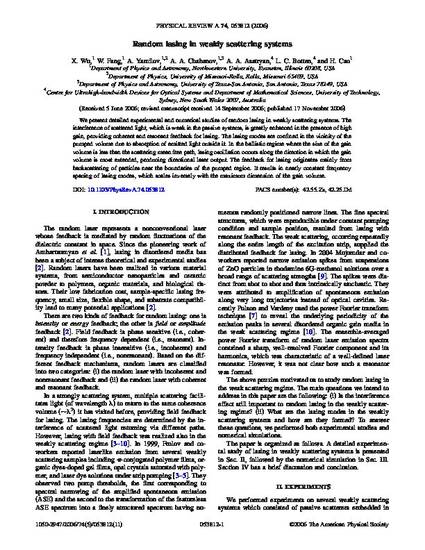
We present detailed experimental and numerical studies of random lasing in weakly scattering systems. The interference of scattered light, which is weak in the passive systems, is greatly enhanced in the presence of high gain, providing coherent and resonant feedback for lasing. The lasing modes are confined in the vicinity of the pumped volume due to absorption of emitted light outside it. In the ballistic regime where the size of the gain volume is less than the scattering mean free path, lasing oscillation occurs along the direction in which the gain volume is most extended, producing directional laser output. The feedback for lasing originates mainly from backscattering of particles near the boundaries of the pumped region. It results in nearly constant frequency spacing of lasing modes, which scales inversely with the maximum dimension of the gain volume.
National Science Foundation (U.S.)
- Laser Modes,
- Light Absorption,
- Light Interference,
- Light Scattering,
- Optical Feedback,
- Particle Backscattering,
- Random Processes
Available at: http://works.bepress.com/alexey-yamilov/26/
